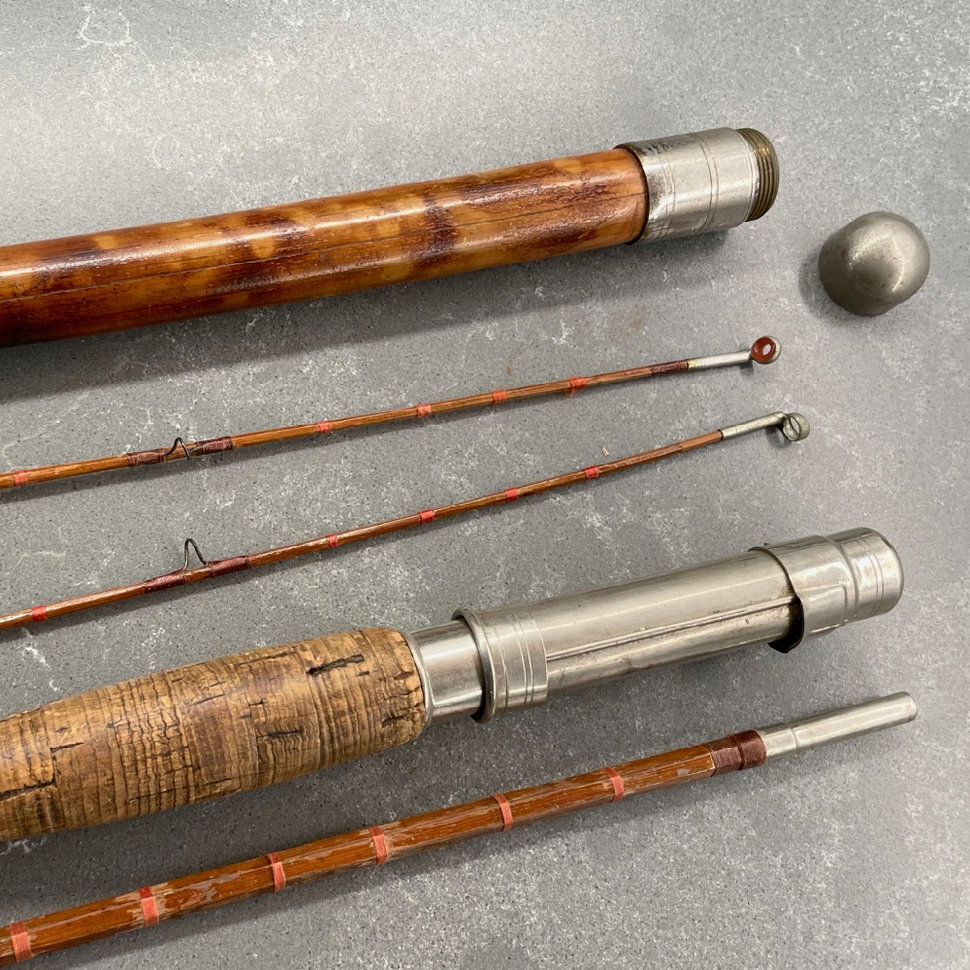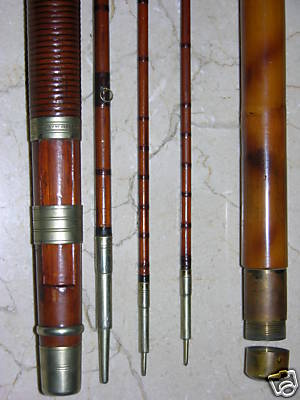Mystery in the Old Mill
19 Jan 2022

Everyone loves a good mystery, especially when it involves items of interest to those whom the puzzle is presented. I'll admit to a peaked curiosity when dusty relics of Angling's past find their way into my shop. This event happens with increasing frequency as word spreads of our growing knowledge on the subject of vintage fly tackle. It is a common occurrence to see well-travel rod tubes or tattered tackle bags ceremoniously carried to the front counter in hopes we might be able to uncover a treasure among the rusty hooks or bamboo strands wrapped in failing fabric.
Garage sale patrons, widows, non-angling offspring, and the occasional estate lawyer have all sought enlightenment from the database of knowledge gleaned from years of such encounters and our personal collections. In addition, our network of friends and colleagues in the industry can be called upon to fill in details if required. While this service does nothing for the bottom line, it is nevertheless something we all enjoy and never discourage.
And so, when an email pinged in my inbox last week with the subject line, Re: Bamboo, I delayed signing off and clicked open the message. The sender got right to the point without introduction or formalities.
"I have two split bamboo fly rods made in the 1800s," the note began. "They were discovered in a compartment of a desk that came from my grandfather's silk mill in Paterson, NJ. Legend has it they were made by firemen in trade for a supply of the long straight canes of Tonkin bamboo on which the skeins of raw silk came from China. I learned to cast with them (they have a slow #5/6 wt action), and both rods were refinished and rewrapped in the 1970s with new snake guides. Each is three pieces, with two tips protected in bamboo tubes finished with silver or nickel caps. The reel seats and ferrules are of the same metal and are original. I'm in my early 80s and used to fish them once or twice a year until I moved west 20 years ago. No one in my family is interested in the rods, and I'd hate to see them just get tossed. Would you or someone you know be interested in them? I suspect they date to just after the Civil War, as five handguns and two sabers from that era were discovered as well. The desk came from Brown's Mill No. Six, which is still located just a few miles from Manhattan.
As split cane rods came into favor in the mid-1800s/early 1900s, my curiosity was piqued. Civil War-era split-cane rods would be some of the earliest on record and, as such, belonged in a museum if these facts were confirmed and a maker identified. So naturally, I replied that I would love the chance to view the rods and perhaps shed some light on their origin and value. In the meantime, I would see what information I could assemble based on the story the gentleman had shared. He agreed to bring the rods by the shop, and we exchanged notes, me asking questions, he filling in a few of the blanks, but nothing that aided in identifying the rods in question. I would need to do some digging.
The internet is a fickle mistress, sowing distrust and misinformation daily, but when used as a tool of discovery, it can pull the answers you seek from their dusty hiding places in a matter of seconds if you know where to start.
My first inquiry was to a social media Bamboo Rod Group, specializing in identifying and valuing vintage rods. By sharing the story as told to me, a reply came quickly of a possible name for the maker, Charles F. Murphy.
Armed with a name and Google, I now delved into the specialty forums filled with facts and stories shared by those passionate about the craft. The deeper I dug, the more convinced I was that the maker of the two rods in question was Mr. Murphy.
Charles Frazee Murphy was the maker of the first split bamboo rod, or at least that is the recollection of his contemporaries. A fellow angler of note, Charles F. Orvis, penned a letter stating that Murphy was "the originator of split-bamboo rods for the trade." This means a professional builder supplying rods to anglers looking for the latest innovation in fly fishing tackle. Mr. Orvis also alluded to Murphy's penchant for "bending his elbow," his comment aimed at intoxicating social behavior and not casting technique.
Based in Newark, a short distance from Brown's Mill Number 6, Murphy was also alleged to be a volunteer fireman in New York and served as an armorer during the Civil War. The latter skill aiding in the art of metalworking ferrules and reel seats.
The evidence continued to mount, though entirely circumstantial at this point. Fly rods supposedly made by a fireman, Civil War guns, and sabers found in a desk where Tonkin cane was discarded after the imported silk was removed, all located just a few miles from Murphy's shop. So again, I reached out to the owner and shared the information I had gathered, asking questions about the grips, ferrules, and reel seats. Since those were the only remaining original components, I hoped they would confirm Murphy's hand in their creation.
The first question I had centered on the use of rattan cane or cork for the rod handles. I admit that this tale lost some validity upon receiving "cork" as the answer. You see, my research into Murphy had unearthed a few photos of rods credited to him, and all had rattan handles or grips. Unfortunately, according to the experts, cork did not come into play until around 1890, with Murphy passing from this earth in 1887. Still, further digging revealed his son carried on the business of rod building after his death, and it was still possible, given the timeframe, that these rods originated in the Murphy shop. Only the rods themselves would tell the rest of the story.
A sporty Mini Cooper pulled into the parking lot, and the gentleman carefully carried in two tattered rod socks containing the mystery I had sought the answers to, carefully laying them on the counter. Then, one at a time, I gently unwrapped the remains, like an archaeologist unearthing a forgotten Egyptian pharaoh. Unfortunately, there wasn't much to learn from what lay there on the glass countertop, only one rod had markings, and something looked too familiar to me. Etched on the reel seat between the rings was the word "Kingfisher." I had the feeling I had seen that inscription before. It would require further investigation and the sharing of photos with those more familiar with the original details that remained, but I was fairly sure what those answers would be.
With detailed photographs taken and posted, I quickly searched for the "Kingfisher" reel seat in question and confirmed my fears. Charles F. Murphy or his son did not make these rods. Instead, these were workingmen's rods made by Montague around the 1920s and, given their current condition, had very little value to anyone except those who love a good mystery, and of course, the young lad who first cast them.
Yet, for me, one question remained. Knowing that the maker was Montague, the bamboo tubes with nickel caps protecting the rod tips were not something normally offered with "workingman" rods. Once again I dug around the internet and found a photograph of a Charles F Murphy rod, one of 15-20 still known to exist. There, next to the rod was the flamed bamboo tube, with the nickel silver cap. I wonder...

Be the first to comment...




